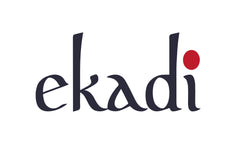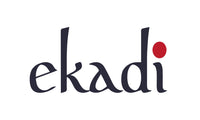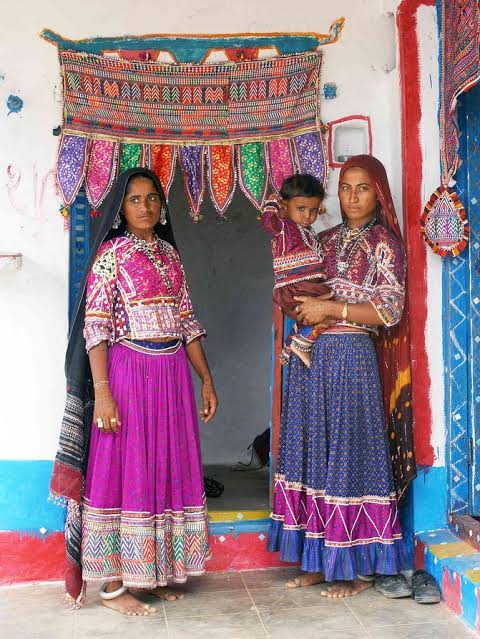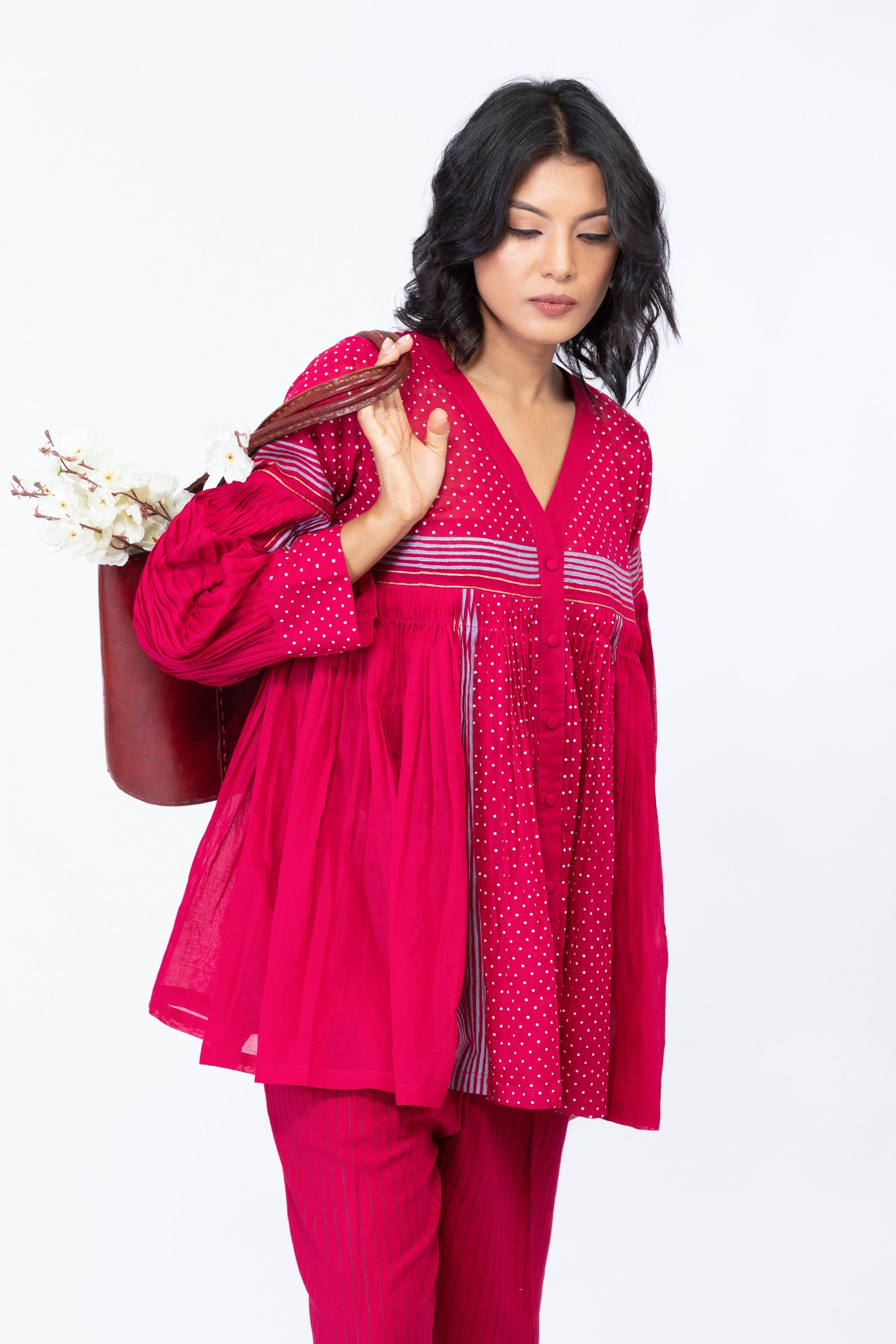Rabari are tribal pastoralists traditionally nomadic but now concentrated in the Kutchh region of Gujarat and Northwest India (Gujarat and Rajasthan). In Gujarati language, Kediyun refers to something that reaches up to the waist, also known as a ‘gathered frock,’ the garment is stitched to be full-sleeved and hip-length.
The upper part of the outfit has a tight fit around the chest and it is made up of two frontal overlapping panels with three tie up portions, one back yoke, a stand collar, two sleeves and two gussets. The lower part that is the kediyun’s ghera is between 6-15 meters, with a length of 11 to 15 inches.
Embellished with dense hand embroidery with motifs inspired from the tales of lord Krishna, peacock, flower with branch motifs, as well as geometrically shaped borders with some decorative motifs the surface design of the kediyun is breathtakingly beautiful and helps to determine the caste, age, and status of the wearer.
Hand-sewn by the women of the family, kediyun is customarily a piece of clothing crafted for and by family members. Each garment reflects the crafters' skill and ingenuity, as well as the evolution of cultural heritage over time. Originally passed down from generation to generation, these handcrafted garments were created for community rituals and personal needs but are now available for commercial use as well. The kediyun is an example of a folk craft in India that is not based on commercial exchange.



